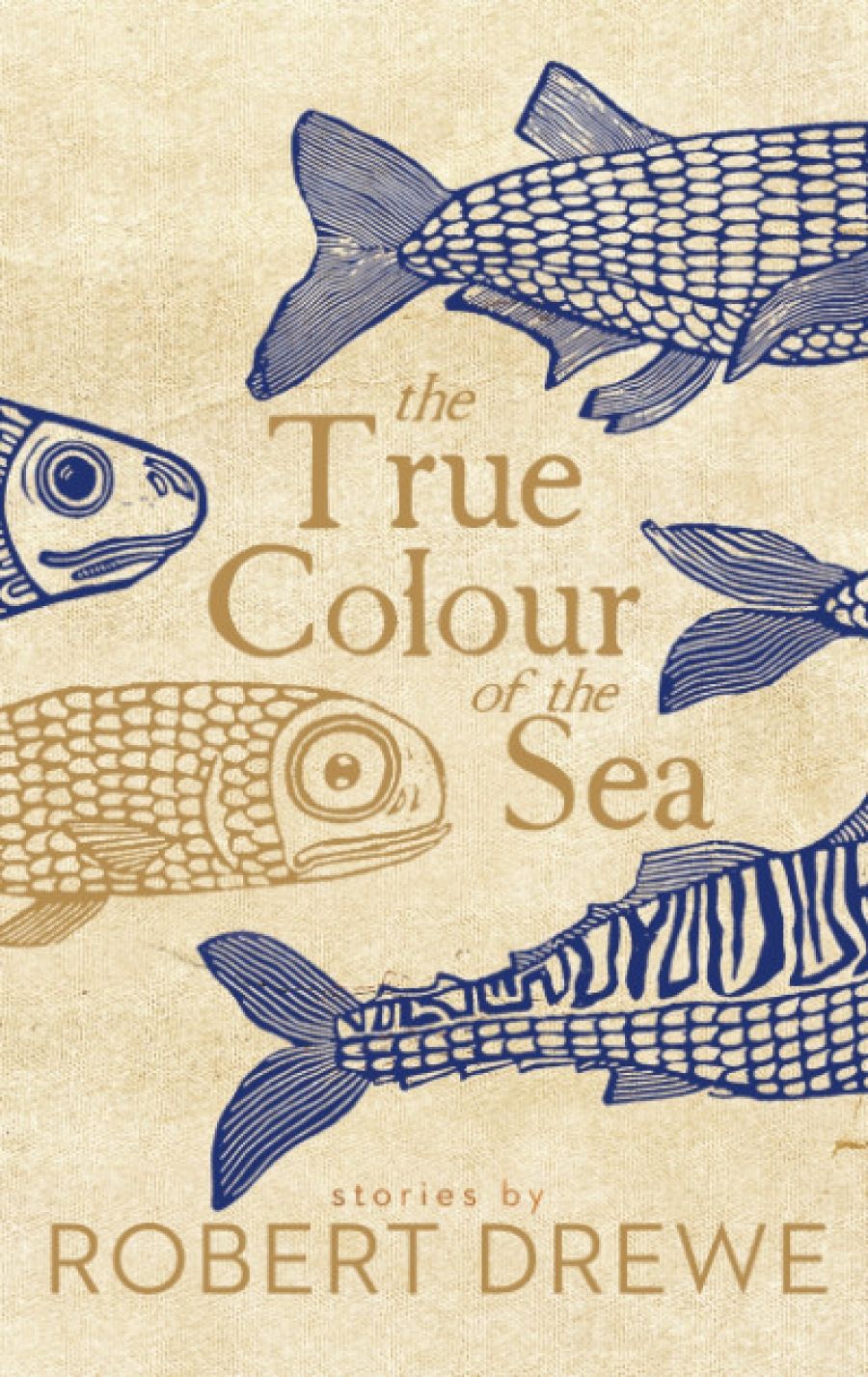
- Free Article: No
- Contents Category: Fiction
- Custom Article Title: Anthony Lynch reviews 'The True Colour of the Sea' by Robert Drewe
- Review Article: Yes
- Online Only: No
- Custom Highlight Text:
Robert Drewe’s first short story collection, the widely acclaimed The Bodysurfers (1983), opens with a story of the Lang family – children Annie, David, and Max, taken by their recently widowed father for a Christmas Day lunch at a local hotel, where it becomes apparent that their father is on intimate terms with the hotel manageress.
- Book 1 Title: The True Colour of the Sea
- Book 1 Biblio: Hamish Hamilton, $29.99 hb, 212 pp, 9780143782681
Fathers figure strongly in these stories – sometimes, but not always, positively. Drewe sensitively depicts ordinary men: husbands and fathers with their shortcomings, but with feelings of longing and love undiminished. The most virile examples of Australian males, however, are quietly unpicked. In ‘Spotting Killer Whales’, a family gathers for a meal following the death of their father, a former businessman and government minister, whose past – not so much his professional life as his domestic – catches up with him posthumously. But the story is ultimately not just about the father but the surviving daughter, sons, and their mother, the last in near total denial of her husband’s death and of his character. It’s a brilliant portrait of family dynamics, and a demonstration of how the past, whether personal or more grandly historical, is often not what we thought it was.
As in so much of Drewe’s work over the decades, the sea is ever-present – sometimes turbulent, more often flat, grey, impenetrable. The True Colour of the Sea traverses many coasts, from the Pacific Islands and Cuba to those of New South Wales, Queensland, and Western Australia, where Drewe spent his formative years. But whereas the characters of his compatriot Tim Winton tend to live in smaller, fringe coastal areas, those of Drewe are mostly from the suburbs. And while Winton’s characters immerse themselves literally and figuratively in the water, Drewe’s are often ambivalent. The sea in his stories is less a source of solace and freedom than of potential hazard, or it is a tableau on which to contemplate and imprint personal difficulty. While in ‘Varadero’, for example, the Australians on holiday in Cuba distinguish themselves from fellow travellers and residents by plunging into the warm waters, others find walking beside water the greater comfort.
‘I’d never sleep if I didn’t walk every day to tire myself out,’ explains the narrator in ‘Black Lake and Sugarcane Road’ – a sentiment mirrored in ‘Shark Logic’ in The Bodysurfers, whose narrator has made it ‘part of my routine to walk along the beach after work … During my walk I think things over as calmly as I can …’
 Robert Drewe (Photo by Penguin Random House)Drewe has also dealt previously with historical subjects – his intimate portrait of the Kelly Gang in Our Sunshine (1991) is a tour de force. While most stories in the current collection are set in a loosely defined present, others have vivid evocations of the past. ‘Lavendah Bay Noir’ is set in mid-twentieth-century Australia, and concerns an aspiring Olympic swimmer preparing for the 1956 Melbourne Games – a more sympathetic though equally doomed character than the former Olympic swimmer in Drewe’s first collection – and the title story is set in the nineteenth century, when a naïve young English artist journeys on a schooner for a remote island.
Robert Drewe (Photo by Penguin Random House)Drewe has also dealt previously with historical subjects – his intimate portrait of the Kelly Gang in Our Sunshine (1991) is a tour de force. While most stories in the current collection are set in a loosely defined present, others have vivid evocations of the past. ‘Lavendah Bay Noir’ is set in mid-twentieth-century Australia, and concerns an aspiring Olympic swimmer preparing for the 1956 Melbourne Games – a more sympathetic though equally doomed character than the former Olympic swimmer in Drewe’s first collection – and the title story is set in the nineteenth century, when a naïve young English artist journeys on a schooner for a remote island.
The collection’s wittiest story addresses present-day grapplings with colonial pasts. In ‘Another Word for Cannibals’, the descendants of English Methodist missionary Reverend Isaac Horne gather on a central Pacific atoll to commemorate Horne, who was killed and consumed by the islanders of Okina in 1867. From Melbourne, Adelaide, Auckland, and San Francisco, they come on the urging of another relative, Dr Jennifer Horne-Smith from the University of Leeds, whose lifelong academic interest in Pacific Island culture was born of her distant relative’s gruesome death. The ensuing ceremony is a comically failed attempt to reconcile the past, with Horne-Smith absurdly reverential, her relatives bemused (‘Frankly, I thought this was one case when we weren’t the bad guys’), and the local leader’s enlarged, strutting sense of entitlement. While not one of Drewe’s most subtle portrayals, it is nevertheless a delicious undoing of self-serving piety.
Never straining for the ostentatiously literary, Drewe’s prose remains beautifully lean throughout this collection. His stories unveil complex pasts while maintaining the tautness of the short story form. Revelation does not lead to pat resolution. The sea can take life and it can bring offerings, but not answers to shore. What is the true colour of the sea? The final, title story teases out the question posed throughout the collection. Drewe’s response seems to be that there is no one colour; that, as any artist knows, it is a question of light, depth, perception. For Drewe’s portrait of the subject and its relation – metaphorical and literal – to complex human lives, we can remain grateful.


Comments powered by CComment